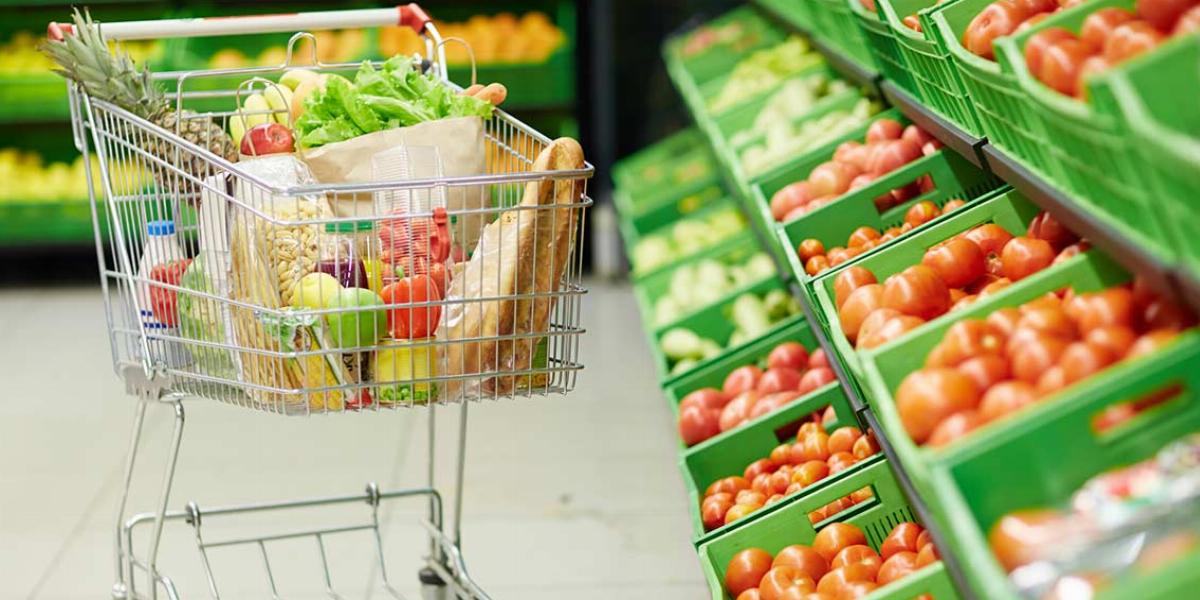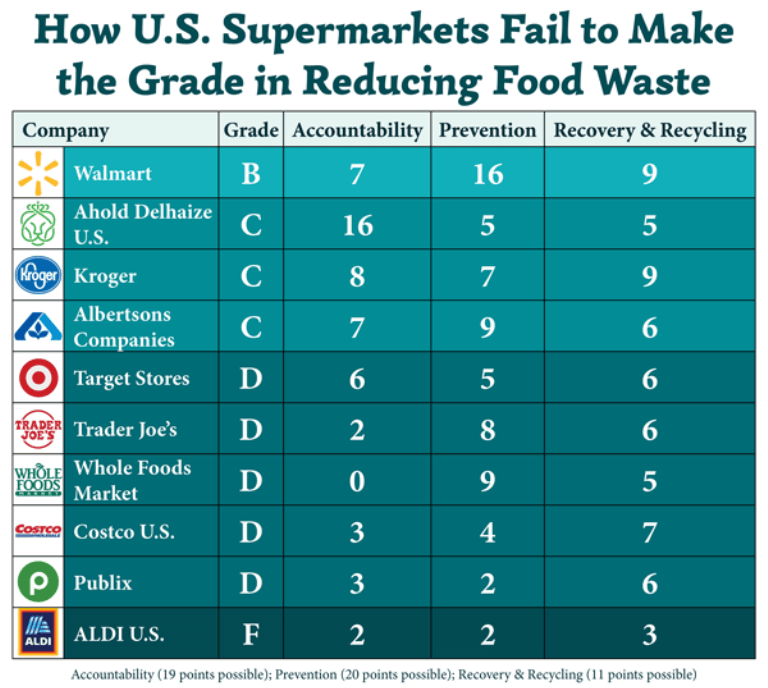
We’ve all felt that twinge of guilt for throwing out a mostly full carton of milk at its expiration date or a bag of green beans we never got around to sautéing. Consumers are the largest source of food waste in the U.S., but plenty of products end up in the trash before they ever see the inside of your shopping bag.
To shed some light on the supply side of this growing problem, we rounded up the most surprising facts on how much supermarkets throw away, why so much food ends up in the landfill and what we can do about it.
When one out of seven U.S. families are food insecure, that 10 percent shouldn’t be taken lightly.
*Source: Business Insider
Supermarkets throw away 43 billion pounds of food every year, according to the most recent study. Many stores are now committed to doing better, but grocery store food waste is still a massive problem.
Walmart was the only major supermarket chain that earned a B on the food waste “report card” recently issued by the Center for Biological Diversity. Just a handful of chains earned Cs, while the rest of the country’s most recognizable grocery stores scored Ds or Fs.
The report card gives supermarkets a score in three different categories:
Source: Center for Biological Diversity and the Ugly Fruit and Veg Campaign
That’s a staggering statistic considering that 19 million Americans* lack access to fresh produce, either due to high prices or because there’s no grocery store in their neighborhood.
Unfortunately, this food waste is due to consumers’ often picky preferences. Stores toss “ugly” produce before it hits the shelves because they fear people won’t buy something that’s not shiny or perfectly shaped. For the same reason, stores ditch fruits that pick up slight bruising from sitting on the bottom of the display. These items are all perfectly good to eat—but stores don’t trust consumers to believe it.
*Source: USDA
*Source: AECF
We don’t have to let all this nutritious food go to waste. There are plenty of beneficial things grocery stores are starting to do with their old produce:
Pro-Tip: Sell-by, Best-by and Use-by dates tell you when a food tastes best—not when it will go bad. Most products (including dairy items) remain safe to eat for days, weeks or even years past these dates as long as they’re stored properly. Baby foods are the only products where dates indicate safety.
Unfortunately, most grocery stores choose the landfill over foodbanks for the products they can’t sell. But it’s not because they don’t want to do the right thing.
*Source: Harvard Food Law and Policy Clinic
Most grocery stores don’t donate food because they’re unsure how to do it safely and without worrying about lawsuits. There are no federal laws for how food donations should be stored and transported or what condition the products should be in. With no guidelines, grocery stores worry that donating food could land them in legal trouble if anyone became sick from their contributions.
But there’s already a law to put their worries to rest. The Bill Emerson Good Samaritan Food Donation Act protects businesses from liability when making good-faith food donations.
These statistics are sobering, but supermarkets have plenty of opportunities to cut down on grocery store waste.
1. Don’t Overstock Shelves
For decades, supermarkets have believed that shoppers are more likely to buy from a stuffed shelf or an overflowing produce display. But when Stop and Shop experimented with ending overstocked displays, sales rose and customers reported greater satisfaction with their shopping experience.
2. Advertise Specials on “Ugly” Produce
Brands like Walmart and French chain Intermarché have had huge success by offering reduced prices on the misfit fruits and vegetables that usually get thrown out.
3. Use Technology to Stock Smart
Modern inventory management software makes it easier to forecast new food shipments with a store’s actual layout and storage capacity in mind. This helps reduce excess inventory and the chances that perishable items will go bad before they’re bought.
4. Partner With Food Donation Pros
From established charities like Feeding America to up-and-coming apps like flashfood, supermarkets don’t have to deal with the logistics of keeping good food out of landfills on their own. There are organizations all over the country who have already worked the kinks out of grocery store food donations.
Minimizing grocery store waste is an important step in the fight against hunger and overflowing landfills. And it’s a step our supermarkets can accomplish by understanding their donation options, stocking shelves realistically and offering shoppers incentives to give good food a chance even if it’s a little funny looking.
Learn more about keeping edible food out of landfills in the Food Waste section of our blog.


